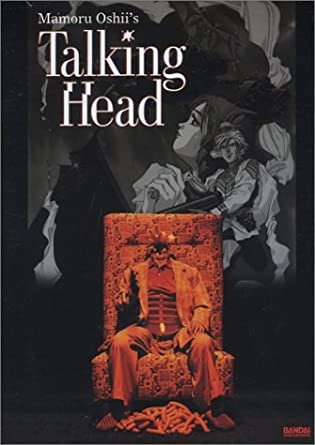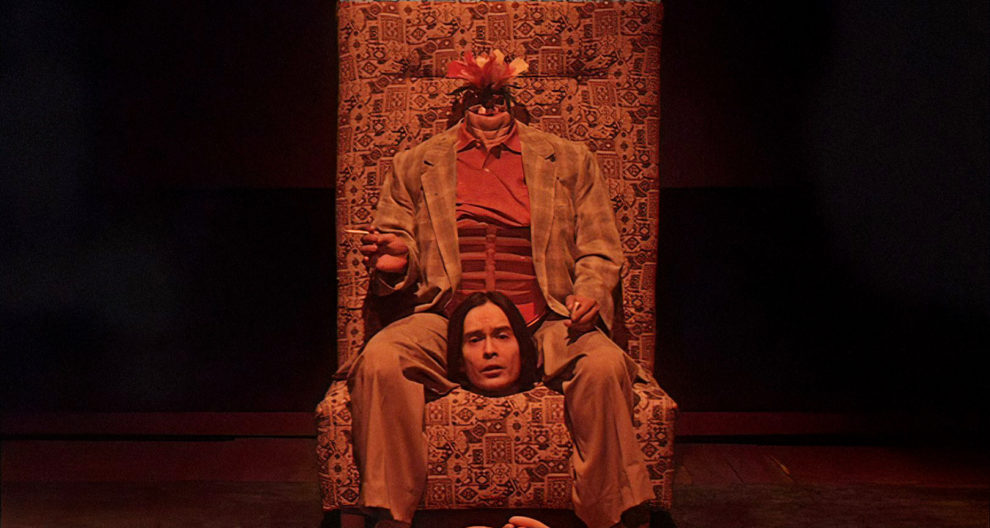Although mostly known for his work in anime and particularly “Ghost in the Shell”, “Patlabor” and “Urusei Yatsura”, Mamoru Oshii has also directed a number of live-action films, which, although do not reach the extremely high levels of the aforementioned productions, still are quite interesting. “Talking Head” with its meta, surrealistic, intensely nonsensical approach, is definitely one of those films.
Buy This Title

A director who was supposed to finish an animated feature titled “Talking Head” has disappeared, and the producer has just hired Rei, a “shadow director” who is known for being able to mimic any style. However, Rei first needs to understand the concept of the movie, and with the previous director having left no elements about what the film is about, he finds himself having to cooperate with the producer, Gen, in order to find out what the film is about and to reconstruct it. Gen suggests for Rei to meet with the other member of the crew, all of which prove to be rather eccentric, while eventually, one by one, start to turn up dead.
Trying to make sense about what is going on in “Talking Head” is a truly futile endeavor, with the narrative looking more like a collage of absurd ideas rather than something compact. However, a phrase uttered in the movie, “A place where one can speak accurately about a movie, if such a place exists, is probably only inside the theater when the movie is actually in progress“, seems to synopsize what Oshii wanted to do here, in a style that definitely winks at “Hausu”.
What is interesting in particular, is how Oshii focuses on the members of the crew that are very rarely commented on, as the story seems to focus on the script-writer, the colorist, the music composer, assistant animation director etc, in an effort to highlight all aspects of the production of the movie, through an approach, though, that can only be described as trippy. This rather unusual, both contextual and in terms of presentation approach becomes evident in a number of scenes. The scriptwriter talking about how directors do not want to include SFX while holding his head on his lap is a distinct sample, as much as the characters being dressed as surgeons during the editing of the film. The comments about how Walt Disney changed animation, the concept of the character that is always there but is never mentioned, also move toward the same direction, while offering a number of sequences of intelligent, surreal humor.
At the same time, there are also elements of theatricality here, as the majority of the film seems to take place inside a movie theater, with the work done by Hidefumi Hanaya and Ayako Matsuo in the production design being excellent, particularly considering the number and the different styles of the sets.
Add to all that a number of references to key figures of the anime industry, including Kenji Kawai who is the actual composer of the movie, and you have the backbone of this chaotic mashup
Hiroshi Matsuo's editing captures all the absurdness in a style that adds to the overall narrative, and through a relatively fast pace that actually adds to the chaos. Yousuke Mamiya captures all the aforementioned through a delirious visual approach, while the intense red hues and the fact that the story takes place almost completely during the night or in locations without natural light, also gives a noir essence to the film.
The acting follows the same nonsensical rules, with Shigeru Chiba as Rei standing out both due to the way he utters his lines, but also through his style, with the constant wearing of sunglasses.
“Talking Head” is a difficult movie to watch, since the rather fast delivery of lines, the abstract narrative, and the many references to various people and cinematic procedures demand both knowledge and patience from the viewer. However, there is also much to be enjoyed here, particularly for those who like their movies trippy, with the comments, the various episodes, and the overall surrealism compensating, at least to a point.















